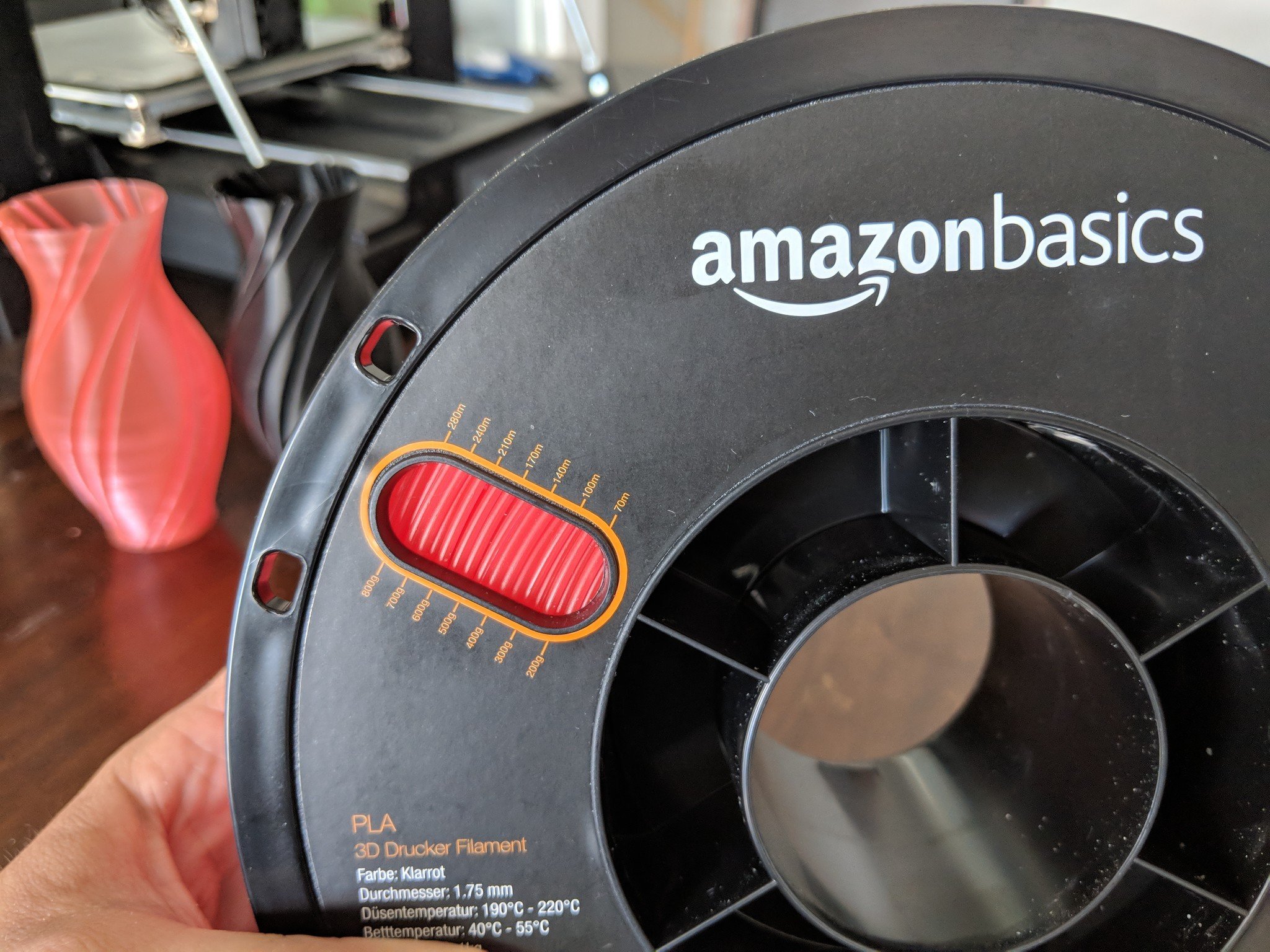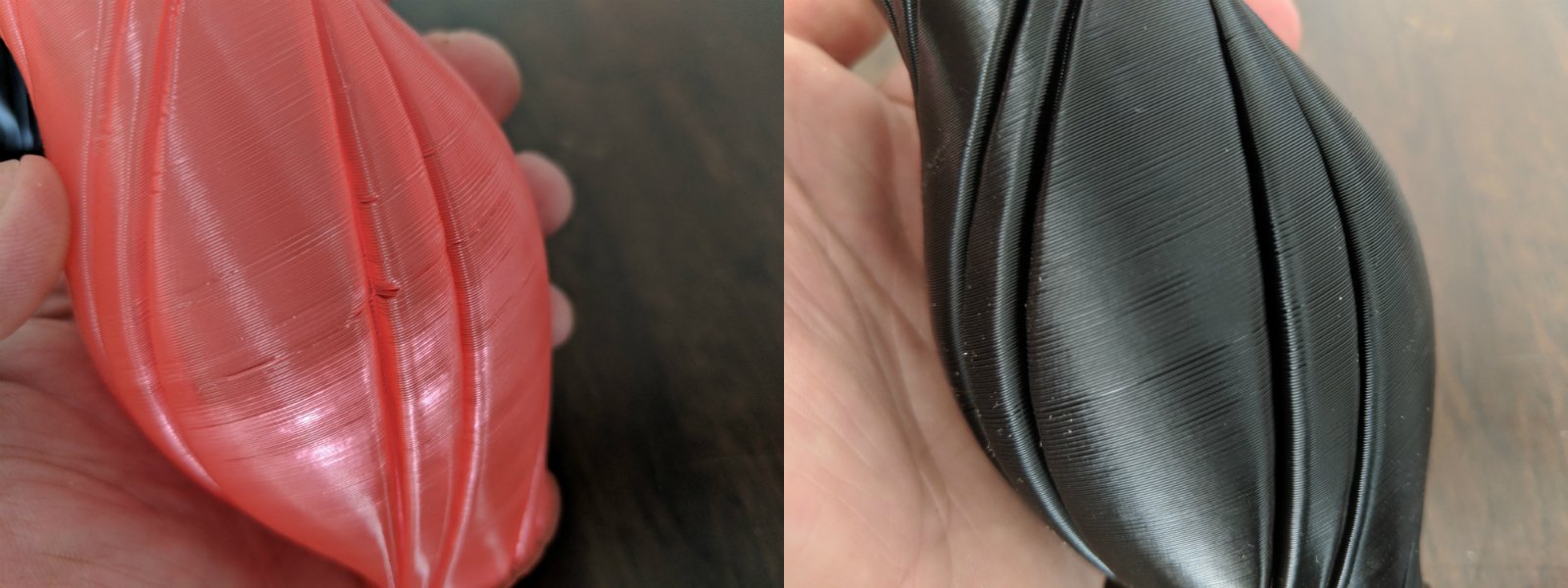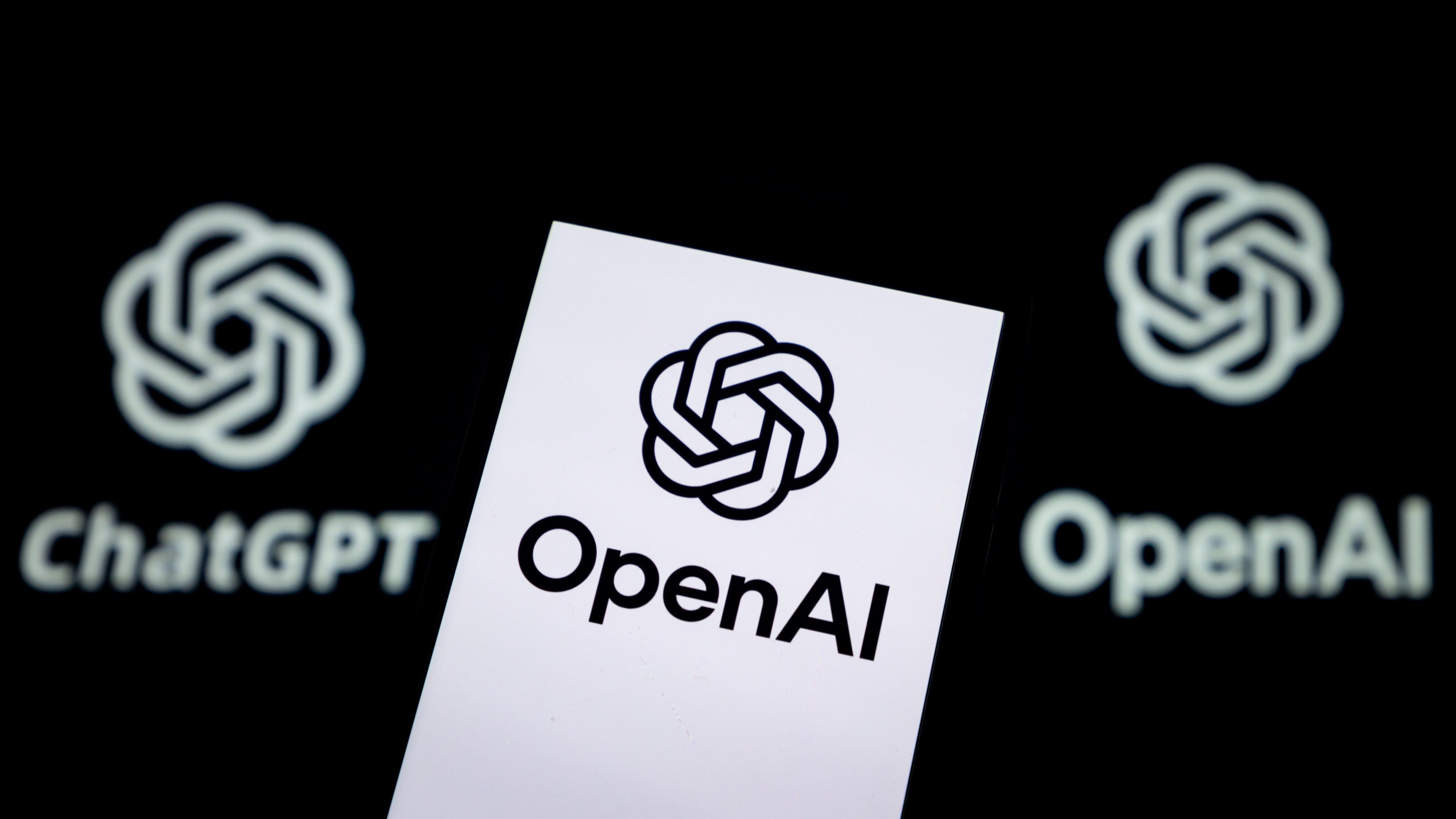With 3D Printing becoming ever more mainstream and the costs of filament dropping like a rock, Amazon was bound to get in on the action at some point, and they have with their AmazonBasics line of filaments. The AmazonBasics brand normally offers great value with serviceable, though not necessarily the highest quality, products, and the AmazonBasics filament seem to be no different. I personally have only used the PLA so far though PETg and ABS are available for purchase. When I have managed to use them I will update this article with more information.
Related: Everything you need to start 3D Printing
What's good about AmazonBasics filament?

The filament itself is very even across the board. With a new filament it always a good idea to check the diameter with a micrometer to check if it really is 1.75mm +/- 0.05mm and the Amazon Basics filament seems consistent throughout the two reels I have. The filament came in a sealed bag with a desiccant bag to keep it dry and there was no sign of moisture while it was printing or in the final model and, as a nice surprise, comes with a measure on the side of the roll to tell you how much filament you have left as you print. I cannot tell you how many times this would have come in handy on other prints. Knowing roughly how much is left on a roll cuts down on wastage considerably.
When printing with the Amazon Basics PLA, the print was fairly consistent throughout and the final vase feels solid with good layer adhesion. I printed the vase in Vase Mode, a continuous line of the filament on a fairly high thickness so it's difficult to tell how smooth the details are but friends on Twitter have managed to get excellent results at high resolutions as well.
https://twitter.com/MoeJike/status/1029468511288999936
Downsides to the pricing

There have really only been two downsides I have seen. The first is in the transparent PLA I tried, there seems to be some lifting in the print as it cools irregularly. This could be fixed by editing some of the settings in my slicer but as you can see in the picture above this curling didn't occur on the black PLA. Now light colors in PLA are notorious for being delicate — honestly, white PLA is such a pain I rarely print with it anymore — so if you persevere you can probably correct this problem, but it is worth mentioning as an error.
All the latest news, reviews, and guides for Windows and Xbox diehards.
The other problem is, surprisingly, the price structure. At $19.99 for a single roll, Amazon is putting it in competition with the likes of Matterhackers and Hatchbox, who make some very good filament instead of the lower end market where it should be. For just $12.99 you can purchase 1Kg of Inland PLA that has no discernable difference to the Amazon Basics material. The only advantage that Amazon Basics has is the bulk discount — if you buy the five roll bundle it's only $79.99 making it $16 a roll — and the fact that the PLA, ABS, and PETg all have the same price tag.
Should you buy it?
As a filament it's not bad, in fact, it's pretty good, but only purchase it if you are buying in bulk. Now, most of us 3D print people do buy filament in bulk, after all a large cosplay helmet can use a 1Kg roll all by itself, but if you are just buying one roll at a time there are other options to consider. Nothing about the Amazon Basics filament blows me away, but maybe that's why it's called basic.
Do you disagree with me here? What are your thoughts on Amazon getting into the filament business? Let me know in the comments.
Disclaimer: All of our Filament reviews are printed on the same Qidi Tech 1 using the same settings for PLA, sliced in Simplify 3D. This is to try and remove as many variables as possible from the printing process so only the quality of the filament shines through. The model is this wavy vase from Thingiverse printed at 50%.

James is a Former Contributor who built his first PC when he was 13 and has never looked back. He can be found on Windows Central, usually in the corner where all the 3D printers are, or huddled around the Xbox playing the latest games.

